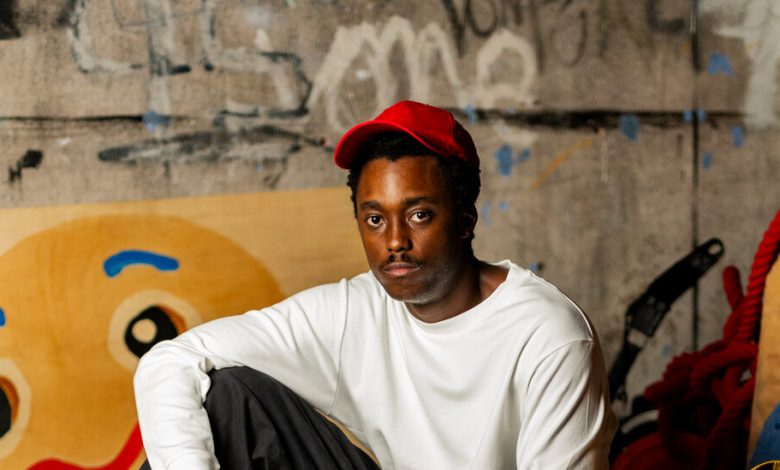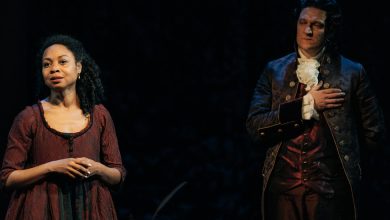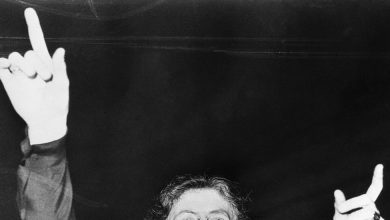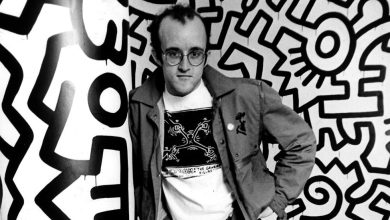In a Land of Primary Colors, Home Is Where the Bounce House Is

What makes a house a home? And what constitutes an American home? Planted dead center on the stage in “This House Is Not a Home,” a slippery, ever-shifting work by Nile Harris, is a house — a bounce house. But it’s more than an inflatable plaything.
It is at the heart of a web of ideas that touch on national politics, arts funding and a local New York scene — the tiny slice of Lower Manhattan known as Dimes Square. You get a sense of where Harris stands on that bit of geography: In “This House,” there is a fight. Over a vape.
Beginning Saturday as part of the Under the Radar festival, “This House” — sad and boisterous, dark yet at times blisteringly funny — will be reprised at Abrons Arts Center, where it was first presented with Ping Chong and Company last summer. (Harris is a member of Ping Chong’s artistic leadership team.)
A provocative look at politics and race, “This House” is a critique of the American experience that explores the intersections of modern-day liberalism, the attack on the U.S. Capitol, and well-meaning nonprofit arts institutions. It gets raucous. Will the bounce house survive this insurrection?
The idea for what became the work began in the summer of 2020 when Harris, 28, and his friend, the interdisciplinary artist Trevor Bazile, started to fantasize about a bounce house. It reminded them of the Capitol Building, Harris said, but it could also represent any institution — and then morph back into “a preadolescent meme.”
Harris started to envision a series of happenings that might incorporate a bounce house: “Should we pull up to a George Floyd protest with a bounce castle,” he said of one idea, “and have people jump for Black lives?”
The bounce house idea was placed on the back burner until 2021, when Bazile became the director of New People’s Cinema Club, a New York film festival funded in part by the venture capitalist Peter Thiel, a financial supporter of Trump-aligned candidates. “Trevor had a very clear point of view around, like, it doesn’t matter the hand that feeds you — it’s all bad,” Harris recalled. “There’s no clean money.”
“With this Peter Thiel money,” he added, “we bought a bounce castle because that was on our forever list to do.”
As part of the film festival that year, Harris and Bazile hosted a party featuring a bounce house in a Dimes Square loft. But just two days after the festival closed, Bazile, who was 25, died suddenly. (Harris declined to specify a cause.) While “This House” is a running commentary — sonic, spoken, choreographic — on many subjects, it is, at its core, a meditation on grief.
It’s also an extension of a manifesto, released by Harris and Bazile as a Google document, about a fictional board meeting. The manifesto, a labyrinth of hyperlinks, poses questions like: “Do you like Black voices or just the voices that say what you want to hear?” “Will you wear your Telfar bag to the race war?”
Throughout “This House,” Harris appears in disguises, including Woody from “Toy Story” and a gingerbread minstrel character he calls Timmy, whose face is fixed in a smile. “Maybe there’s some comment there about Blackness and Black life, but it’s a smiling face,” he said. “It’s approachable.”
Dyer Rhoads, the production’s dramaturg and set designer, has created a vibrant set that brings to life a universe of primary colors, where paintings, plastic and, of course, the bounce house, function as a larger-than-life diorama. But because “This House” reacts to the events of the moment, it will not be the same show it was last summer.
“I always say it’s 60 percent set and 40 percent improvised,” Harris said of the show, which is informed by world events and uses improvisation, including audience interactions. “It responds to current affairs, it responds to the conditions that it’s put in. And we are in a very different state in the world than we were six months ago.”
Improvisation means everything to Harris, who added, “How I understand being a moving and performing body is responding to what is presently happening in the room.”
“This House” features the performance artist Crackhead Barney employing her daring crowd work; and the dancer Malcolm-x Betts, whose unfurling, out-of-body improvisations lend a vivid vulnerability to an increasingly fractious stage world. To Harris, the work is a play. But the “the play,” he said, “is the people. The play is about me, Malcolm and Barney and our thoughts on the world.”
Harris, born and raised in Miami, was a serious theater student growing up. He attended the University of North Carolina School of the Arts, along with Rhoads, and graduated with a B.F.A. in acting. “I’m an actor for better or worse,” he said. “I don’t know what I am.”
Actually, you get the feeling that he does know — or at least that through making art, he’s figuring it out. Harris has created shows since his teenage years; after moving to New York in 2017, he discovered the experimental downtown dance world and took a formative workshop with the choreographer Sidra Bell. “It really cracked open my brain,” he said of her improvisatory approach. “If I have any dance education, that is a point of reference.”
He studied clowning, too: “A lot of how I understand my relationship to audience is through the notion of clowning,” he said. “There may be laughter, there may be costuming, there’s physicality.”
Creating the physical approach for Betts’s movement in “This House” began when the pair spoke about childhood memories; Betts said that it was as if the bounce house represented the ghosts of children.
Betts’s improvisations are rooted in his movement background — Black club house dancing, vogueing, West African dance. “The dancing is very physical,” he said. “The memories are moving through me, and memory can also trigger you to go into a space that you don’t expect to go. It’s triggering in a way that enables something new to unlock.”
Even as Harris calls “This House” a play or even an opera — the sound design is an important component, especially the way that vocal amplification is incorporated — he thinks a lot about language in the body. He doesn’t consider himself a dancer, though he has performed as one, and dance is a continuing practice for him, he said, “inside of my greater theatrical concerns and convictions.”
“I love dancers,” he said. “I hang out with dancers, I’m in that community of people. There’s just something about that community of artists that is really just moving. If you can commit to valuing impermeable things that barely exist and dedicating your whole heart to it? It’s so not shiny, it’s so not sexy. It’s just, like, that commitment is work. And that feels really important.”
That also relates to something Rhoads, the dramaturg, said about “This House”: “In a lot of ways, it’s ended up being about the risks we take for art.”
And Harris is open to risks. Big ones. “Do you want to know my dream?” he said. “I really want to create and direct a pop star concert. It’s not narrative — it’s associative, it’s sound based, it’s image based and it’s dancing.”
He said he was thinking of a Doja Cat — someone who would get him, someone who would appreciate his affinity for creating interludes with weird little meme jokes. “I want to work with scale,” Harris said. “There’s no opportunities for emerging artists or an artist in New York to work with scale. By hell or high water, I will.”



